In industrial data analysis, precisely examining short events is crucial for optimizing processes and preventing disturbances. Short events, which are shorter than the index resolution, present a unique challenge as they can easily be overlooked. Here, I will show you how short events can still be analyzed in TrendMiner using a value-based search.
Examples of short events
Examples of short events include sudden pressure spikes in pipeline systems, which may indicate valve malfunctions or blockages, temporary temperature fluctuations in reactors, which can point to unexpected chemical reactions, and brief electrical spikes in systems, which may signal short circuits or overloads. Analyzing these events accurately allows for taking preventive measures and improving process stability and system safety.
Background on indexing in TrendMiner
TrendMiner uses indexing to enable fast, interactive visualization and analysis of time-series data. When a tag is accessed for the first time, it undergoes an indexing process. Once indexed, this data is available to all users within the TrendMiner installation, subject to data access permissions. Indexes are updated automatically to ensure up-to-date access to recent data.
Key parameters of indexing: Index Resolution defines the granularity of data analysis by determining how frequently data points are recorded. For instance, a 1-minute index resolution means that data is indexed every minute. The Index Horizon sets the starting point for indexing, with TrendMiner indexing data backward from the current time.
Impact on searching for short events: Searches in TrendMiner are performed on indexed data – not on raw data. Short events, which occur in less time than twice the index resolution, may not be detected through regular searches. This happens because such events may fall between recorded data points, making them invisible in the indexed data. For example, with a 1-minute index resolution, events lasting less than 2 minutes might not be captured by standard search queries.
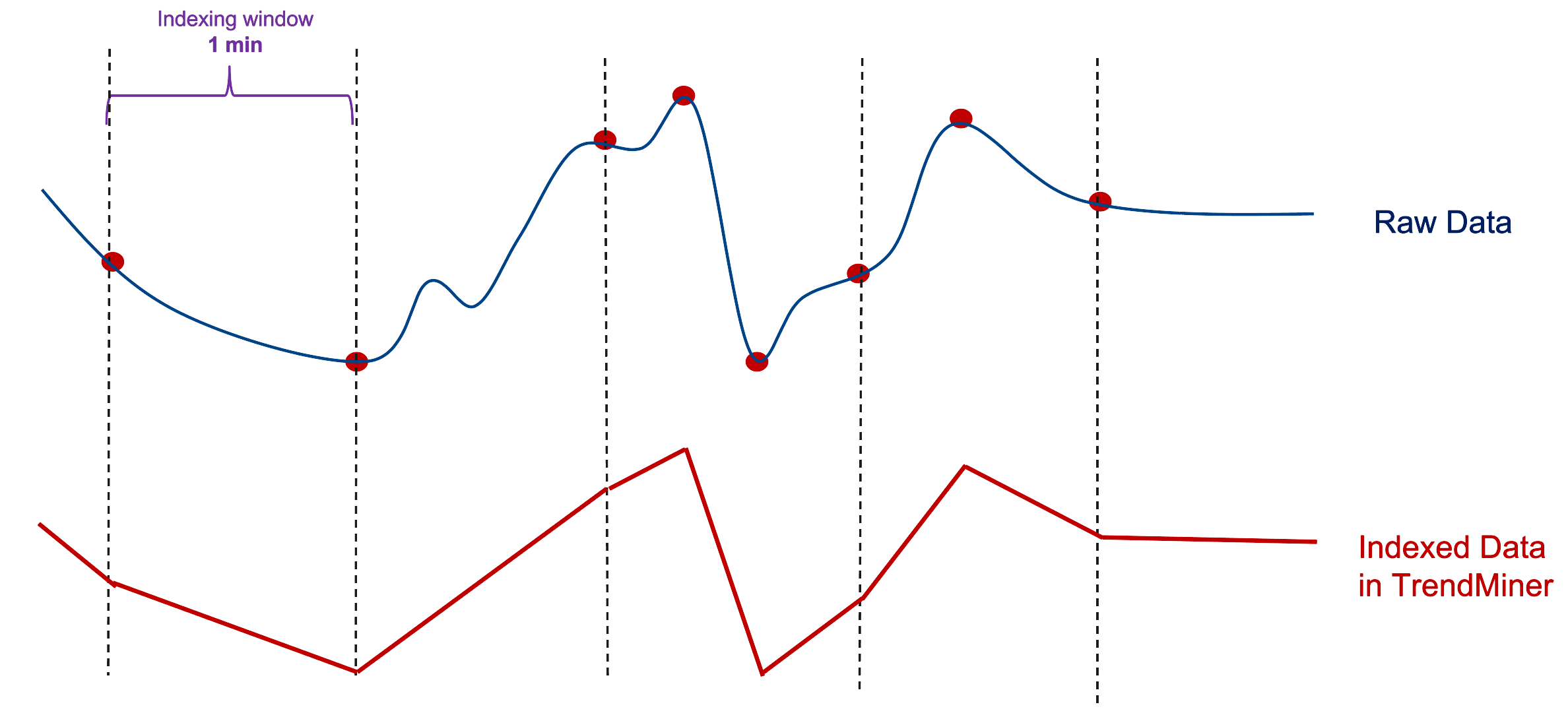

Searching for short events
To address short events, follow these steps:
- Create an aggregation: If you are searching for spikes or drops, you can use a maximum or minimum aggregation of the original tag with a central aggregation window that equals twice the index resolution. This will create a tag that captures spikes or drops of at least twice the index resolution, even if the original event was very brief.
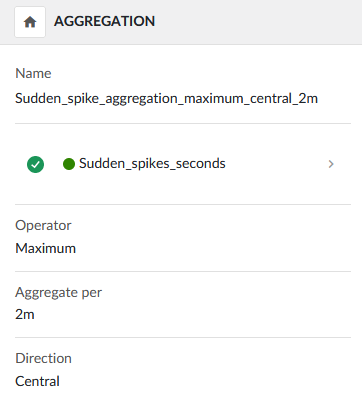
Example of aggregation for a short peak
- Perform a value-based search: Conduct a value-based search on the new aggregation tag, focusing on values that exceed the threshold. By using the default minimum duration of twice the index resolution, you should be able to detect all instances where the original tag exceeded the threshold, regardless of the event’s brevity. If desired, you can also set up monitoring to automatically receive notifications whenever such events are detected.
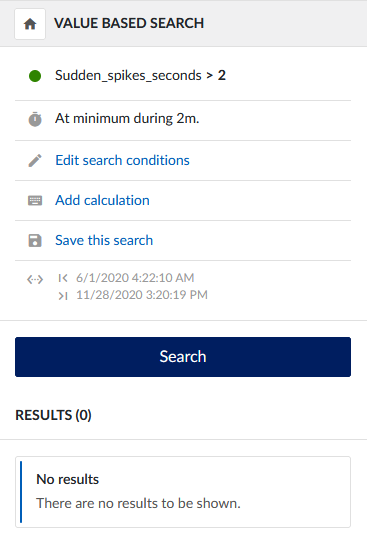
Value-based search for the original tag 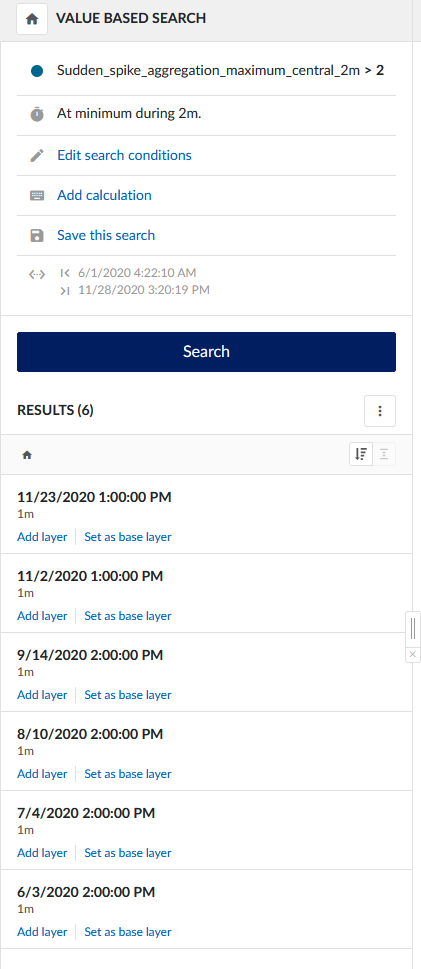
Value-based search for the aggregation tag
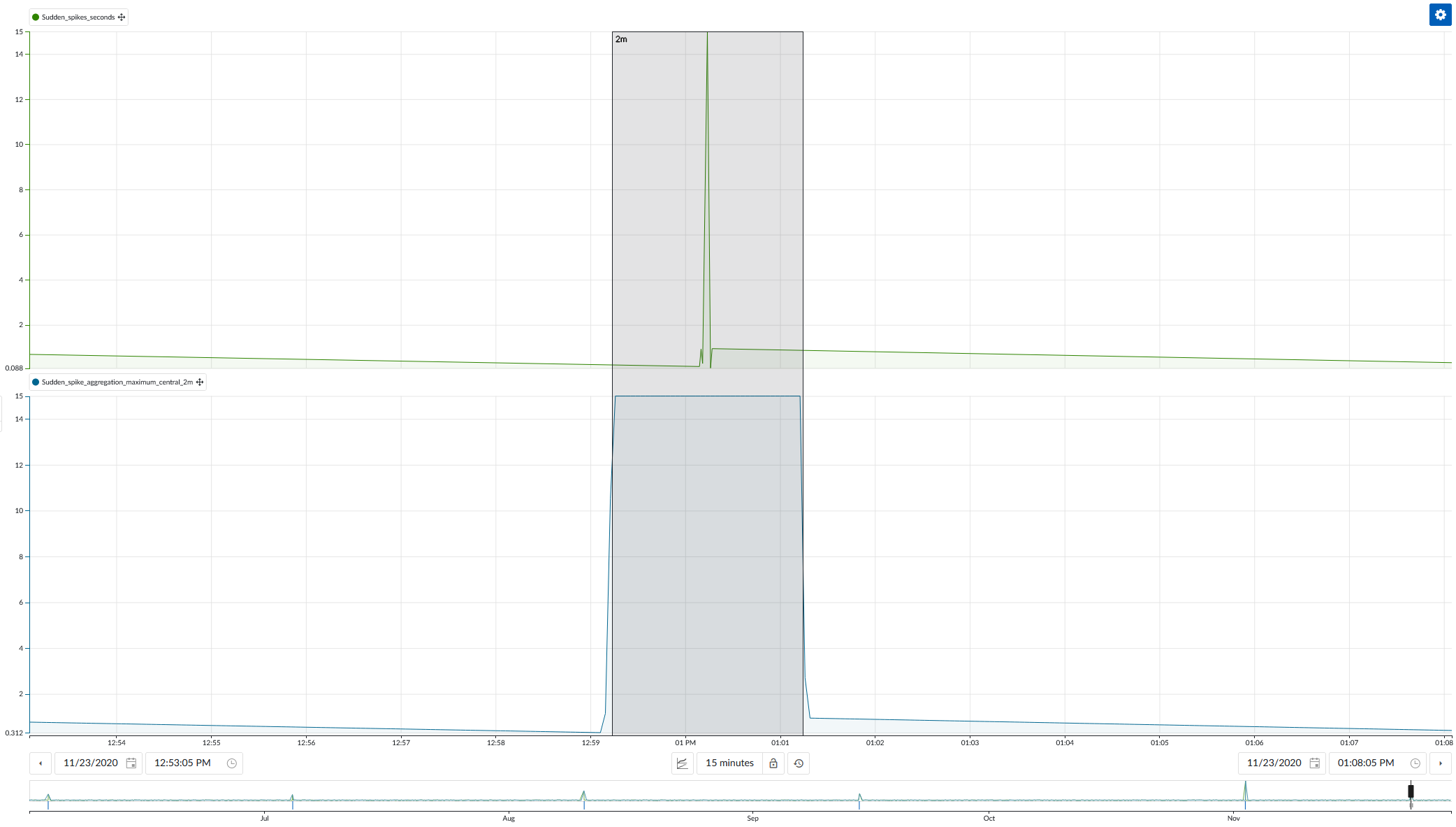
Benefit
This method significantly improves the ability to detect and analyze brief but critical events that might otherwise be overlooked. By using an aggregation to capture short spikes or drops and performing value-based searches on this aggregated data, you can identify and analyze events that occur in less time than twice the index resolution. This ensures that even fleeting issues are detected, leading to more accurate insights and better-informed decisions for process optimization and troubleshooting.



